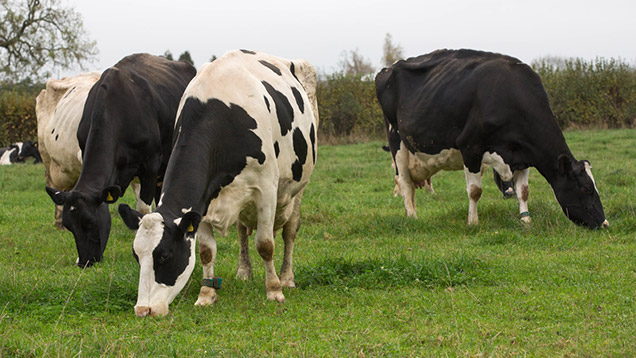Milk quota abolition: Everything you need to know
 ©Tim Scrivener
©Tim Scrivener Dairy farmers will wake up in a new world on 1 April. After more than 30 years, the EU milk quota regime finishes at the end of March.
See also: 12 dairy predictios for when milk quotas go
On Thursday (26 March), farm commissioner Phil Hogan hailed the chance to tap into growing world dairy demand.
But what is changing? How does it affect farmers? And why did we have quotas in the first place?
What’s happening?
The milk quota regime is ending on 31 March. Each EU country has had limits on the amount of cow’s milk delivered to dairies or sold direct each year. If they overproduced, they were fined heavily. But, from next month, those brakes are off.
Hasn’t it been coming for a while?
Yes, for 12 years. The decision to abolish quotas was taken in the 2003 round of CAP reform. The EU decided to bring in a “soft landing” from 2008, raising the quota slightly each year to allow countries to ramp up production steadily.
Why are the restrictions coming off?
The EU wanted European farmers to be able to sell more products on fast-growing dairy markets around the world. Global demand for dairy is expected to grow 30% by 2024, particularly in the Far East and South Asia.
By removing quotas, EU farmers and dairy companies can grab their share of that new business.
That’s today, but why were they introduced in the first place?
Overproduction. In the late 1970s and early 1980s, subsidised European milk production kept outstripping shopper demand, leading to waste in so-called milk lakes and butter mountains. So, in 1984, the EU brought in the quota regime to cap each country’s output.
What’s going to happen in Europe?
There will be more milk. By 2024, the International Farm Comparison Network (IFCN) predicts European production to rise 12% to more than 150bn litres. The EU could overtake New Zealand as the world’s biggest dairy export region.
Haven’t we got loads of milk and plenty of volatility already?
Yes, it’s like quotas have already ended. In anticipation of abolition, production has been building in several countries, especially Ireland, the Netherlands and Germany.
They have been hit by millions of euros of superlevy fine, but are in prime position to expand this spring. The milk price crash of the past year has been a taste of things to come.
With more milk, what happens to prices?
The growing demand in Asia should support prices over the long run, with the IFCN predicting a 10-year average of 29p/litre. But more volatility is expected, as supply and demand will never move in sync. Farmers could have to cope with 50% price swings in the future, even worse than this year.
Are their any tools to help farmers manage?
There is no market management planned to control supplies. But the Commission has created a milk market observatory to provide up-to-date information on prices and trends.
Farmers outside co-operatives can also form collective bargaining groups called producer organisations. And crisis instruments, such as public buying and private storage aid, still exist.
Is there anything for the volatility?
No, it’s just part of the deregulated, global market. It will be up to dairy companies and co-ops to add extra value with brands, introduce cost-tracker contracts and offer longer-term deals for farmers.
How does this affect UK farmers?
Britain hasn’t breached its milk quota for 10 years, so production limits haven’t been a problem. But government and industry wants to improve the billion-pound trade deficit in dairy products.
To do this, the UK has no choice but to be competitive on price in a free, global market. Otherwise, cheaper products from competitor nations can flood in.
We need co-ops and private processors to invest in factory capacity and research, and help farmers ride out those heavy price swings. And producers will have to keep improving their efficiency.
What happens to the milk quota I’ve bought over the years?
Milk quota has little value today, but many farmers bought it at much higher prices in the past. This will lead to a capital loss from 1 April, which can be offset other gains for tax purposes.
How has UK dairying changed since quotas came in?
The numbers are stark. In 1984, the UK had more than 50,000 dairy farms with 64 cows on average.
In 2013, there were 14,116 herds with 134 cows each.
Over the same time, the average yield rose 55% to 7,327 litres. But, the total amount of milk produced fell from 15.5bn to 13.3bn litres.
